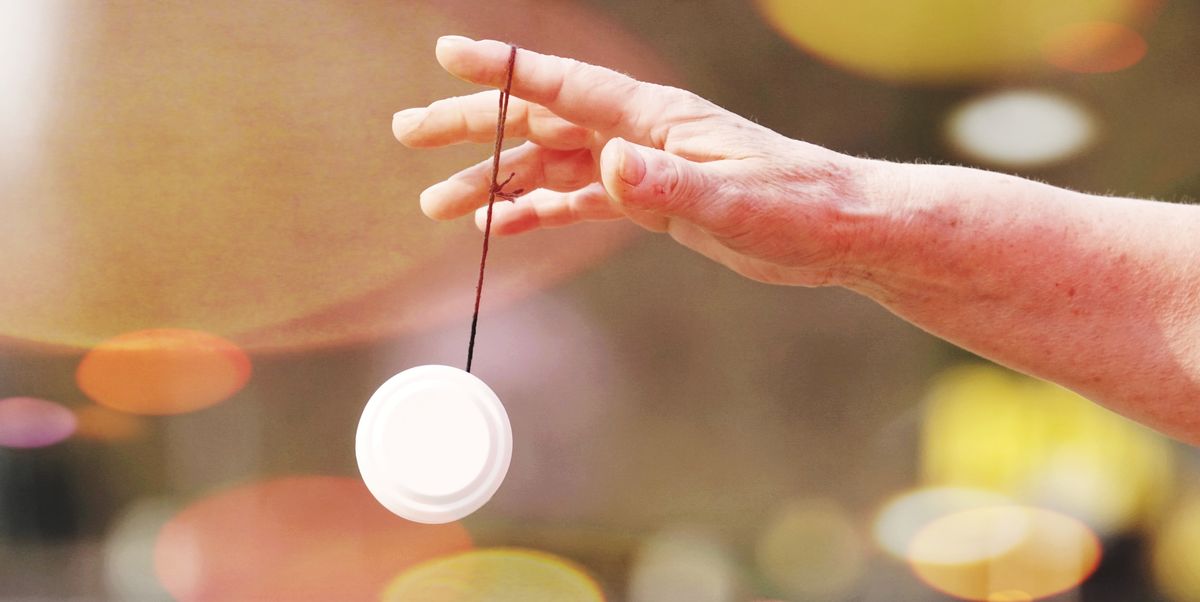“Can pee; will pee” has been something of my unofficial personal motto for as long as I’ve been potty trained. Ever since diapers stopped being an essential part of my ‘OOTD,’ my everyday routine has been punctuated by a staggering amount of trips to the bathroom. On a long-haul flight, I’m up and down in the cabin like a jack-in-the-box, and the person who did get the aisle seat inevitably hates me. At concerts, I’ve missed hearing my favorite songs performed live as I’m busy hopping from foot to foot waiting for a stall to free up. I’ve had to get off public transport in unfamiliar neighborhoods in the middle of the night in search of a toilet. I now have easy-to-access restrooms across New York City starred on Google maps like others may have their favorite ramen spots earmarked.
Having a needy bladder is fine, until it really starts to mess with your daily life. I don’t have to wait until pregnancy or old age to know what incontinence is like. Been there; got a slashed Uber rating as a result! I’ve also lost control of “holding it in” while running a half-marathon and worse, on a bus in front of waaaay too many people to ever live it down.
Here are the CliffNotes on the human bladder: they’re all the same size. If you’ve long told others that yours is small, this isn’t the case. In fact, they’re all the size of a large grapefruit and can hold around half a liter for between two to five hours. If you, like me, need to urinate more than eight times a day, you, too might have an overactive bladder. Welcome!
Typical treatments recommended for ‘OAB’ are about as helpful as an out-of-order restroom: Kegel exercises (evidently, not just for the bedroom), scheduled bathroom trips, absorbent pads. Once I actually saw a tea purporting to help bladder control which seemed…contradictory? But deep down the Google rabbit hole, I came across a study from 1982 detailing what happened when fifty incontinent women were hypnotized for one month by listening to a pre-recorded cassette (vintage!) At the end of their 12 hypnotherapy sessions, 29 were deemed ‘entirely symptom free’ while 14 others were considered “improved.”
I realistically couldn’t cancel my lifelong subscription to this “pee on demand” lifestyle through kegels alone, so—spurred on by the “improved” woman—I decided to get hypnotized. Hugh Osborne, a registered Cognitive Hypnotherapist and life coach from Britain based in Zürich, agreed to work with me via Skype to see if I could have a similarly positive outcome.
During our first session, we delved into my background, combing through my childhood to figure out whether there were any formative experiences that had led to me feeling the need to urinate an incessant amount. The only thing that arose was that my mom has a similar “can pee; will pee” attitude, though in fairness she has had four children. Still, it’s likely that regular trips to the bathroom had always been a part of our outings together throughout my younger years.
What quickly became apparent were both my mental cues and the language I tend to use around the issue. I utter things like, “I’m dying to pee” or “I can’t think until I pee” all the time (dramatic, much?) which really only serves to exacerbate the urgency. I had also gotten myself into a position where turning the key in the door of my apartment, undoing the button on my jeans, or even just seeing the toilet had left me barely unable to wait a second longer.
These were the first things we worked on, with Hugh teaching me exactly how to disassociate those behaviors with the physical act of going to the bathroom. After our second session, I went to use the facilities before I left the office one evening (I live a ten minute walk away, but old habits die hard). As I stood at the sink, I absent-mindedly finished typing out a lengthy text message. When it was sent, I realized how monumental this was: I hadn’t dashed straight into the stall like I always have for as long as I can remember.
“A lot of it is to do with the mental aspect,” Hugh said when I told him. “The problem is that we don’t realize how much this is the case until we start to bring awareness to compulsive behavior. The behavior has become ingrained through repetition to the degree where the person no longer needs to think about it, because it’s habitual.”
I began to understand this more and so I tested the boundaries. Before, I would use a restaurant restroom a couple of times during the course of a meal or I’d take the opportunity to pee practically every time I walked past the bathroom in my apartment. But after working with Hugh, I realized that when my mind was elsewhere, I could go for hours and hours without “needing” to go.
“Your body will naturally let you know when it’s time to pee, but it will also respond to any anxious thinking about needing to use the bathroom,” Hugh agreed. “In changing your thinking and bringing awareness to the behavior, you are not cognitively interfering with your body’s natural processes. It’s a bit like if someone talks about a rash and you start to itch; your body is reacting to the mind’s thinking.”
In between my four Skype sessions, Hugh recorded two MP4s for me to listen to. In a memorable episode of Friends, “The One With The Hypnosis Tape,” compulsive smoker Chandler Bing is repeatedly told that he is a strong, confident woman. The premise of the voice clipse Hugh sent me were essentially the same. Think: Headspace or Calm, but for the mind-bladder connection. Hugh’s voice would lull me into a deeply-relaxed state where he’d instruct me to imagine putting my compulsive thoughts around using the bathroom into a box and move on, leaving them behind. As the audio files allowed me to drown out everything else going on in my life, settling in to listen to them became virtually the only time of the day when I would truly switch off. I began to look forward to that sense of stillness.
Hugh, previously a hairdresser who changed career paths when he realized he preferred listening to his client’s problems over cutting their hair, said that hypnotherapy isn’t a solution for everyone.
“Hypnotherapy won’t usually work if the person doesn’t really want to change,” he stated. “This is especially the case if they’re not willing to do their part and make it a co-active process. The ideal candidate is someone who really wants to change and is willing to put in the work from their side, even if it’s just listening to a recording, and bringing a little awareness to their patterns, which is enough to start the shift.”
These days, the mantra is more “Can pee? Will pee, if I actually need to.” Still, I’ll always keep that NYC bathroom near me map handy, just in case.

